- Crimean Scolopendra
- Centipede
- Pest nutrition and reproduction
- Scolopendra Bite
- Insect control
Crimean scolopendra is found in Crimea, but is often found in European countries, Africa. She is the Black Sea. Belongs to the order of ringed millipedes. An exotic creature lives in the wild, but quite often becomes an unexpected guest in a person’s house. Who is a scolopendra is well known to residents of the Crimea, but guests have to study information in advance to avoid trouble.
Appearance
Description and photos of the Crimean scolopendra can be seen in each biology textbook. An exotic creature attracts the attention of both scientists and ordinary mortals. And the matter is not only in an unusual form.
On a note!
A centipede in Crimea with a dense shell reaches a size of 15 cm. The Crimean scolopendra living on the island of Crimea is the smallest representative of the class.
The color is golden yellow, olive brown. Young individuals are always lighter. Caucasian black. The legs are located along the entire body. The limbs are short, but extremely mobile, strong. The first pair of legs is grasping jaws, which is quite difficult for the victim to get out of.
There are long antennae on the head, which help to navigate in space, to search for the victim, to determine the danger. Round eyes are clearly visible. The body ends with a long tail.
Behavior features
Crimean ringed scolopendra leads a hidden, nocturnal lifestyle. During the day, hiding under the trees, old stumps, stones, cramps, in the rocks. She feels equally well in a rocky area, on the coast. You can meet a scolopendra throughout the territory of Crimea.
The centipede of Crimea is not shy, but prefers to hide from unnecessary eyes. If he feels the danger, he will certainly rush to attack. Any careless movement on the part of man is regarded as aggression.
With the onset of cold weather, the Crimean centipede is looking for a secluded place under foliage, moss, or digging holes in the ground. Winters in splendid isolation on the island of Crimea. In the spring he wakes up, crawls out.
On a note!
In search of a secluded place for wintering, the Crimean scolopendra often creeps into a person’s house. If it has all the conditions for a favorable existence, the insect remains for a long time. The predator needs moisture, heat, the presence of food - other insects.
Nutrition
With the onset of twilight, the skolopendra in the Crimea goes hunting. What millipede eats - the diet is not so diverse. It hunts various insects, even animals. Often young lizards become victims of attacks.
The Crimean scolopendra is hunted by the sense of smell, fast legs and poison. Millipede awaits motionless victim in shelter. As soon as it appears on the horizon, the predator immediately rushes to the attack, grabs with front limbs, inflicts bites one after another. Then he jumps to the side, watches what is happening.
The poison paralyzes the victim and also dilutes the internal organs. After a few seconds, the millipede is already beginning to eat, and the half-dead victim is unable to resist. The diet includes spiders, beetles, cockroaches, flies, crickets, grasshoppers.
Breeding
Crimean Scolopendra is an extremely independent creature.For breeding, it does not require the presence of a male. Eggs are fertilized at certain times of the year without the presence of seminal fluid.
Lays eggs in the sand. From there, babies are born that outwardly differ from the mother in body size. At first they live next to her. Scolopendra teaches them to hunt, protects them from enemies. After a while, the cubs become independent, spread to different sides of the Crimea.
Important!
Egg laying occurs in early spring. At this time, the Crimean scolopendra was the most aggressive, as evidenced by the inhabitants of Crimea.
Danger
What Crimean scolopendra is dangerous for humans is not hard to guess. She bites very painfully. However, the attack of an exotic millipede does not carry mortal danger:
- swelling, redness, soreness forms at the site of the bite;
- general health worsens;
- in people with weak immunity, body temperature rises, there is a headache, chills, fever.
But painful symptoms disappear within 3 days. The bite of the Crimean scolopendra is dangerous for the development of an allergic reaction. In addition to poison, a sticky substance gets on the skin of a person, which the predator secretes under stress. Liquid is a strong allergen. Itching, burning, swelling, redness, rash appears. In patients with asthma, an asthma attack may occur.
On a note!
The Crimean millipede can bite by the leg. But if a person was sitting during an attack, his hands, back, and stomach may suffer. In this case, you must visit the clinic, get recommendations from a specialist in the Crimea, or upon returning home for guests of the island.
Pest Control
Scolopendra lives in the wild, it is not worth fighting with it purposefully in such conditions. Exotic creature destroys many harmful insects, which only cost cockroaches. It is just necessary to exercise caution when staying in the Crimea, walking along the promenade.
If a curious individual crosses a person’s possessions, measures must be taken. You can get rid of the Crimean scolopendra in the house by general cleaning. If there is no dampness, a power source in the room, the millipede will not stay for a long time, it will find a way out on its own. If the scolopendra has time to settle, it is necessary to start cleaning:
- Eliminate dampness.
- Dry the room.
- The most important thing is to bring out another living creature. Often, Crimean scolopendra is attracted to the house by cockroaches, ants, flies, spiders. There will be no food, the pest will leave the person’s possession on its own.
What you should not do:
- Poison with insecticidal aerosol. This many-legged creature is not included in the list of pests with which the tool copes. To get the desired effect, you have to pour a whole spray can on top of the scolopendra, which is impossible to do because of its high mobility.
- Slam the newspaper, crush the slipper will not work either. Strong shell protects the body - this time. Secondly, the millipede will run away faster than a person swings.
- Adhesive traps are completely useless. They are not able to hold a mobile, strong millipede.
What should be done:
- Eliminate malfunctions of the water supply system, faucets, wipe dry all surfaces.
- To poison flies, spiders, cockroaches. Or wait until they are destroyed by a scolopendra, and then get rid of it itself.
- Put small ventilation grilles, repair cracks in the wall, floor, doorways.
You can kick the Crimean scolopendra out of the house with a pungent smell. In the evening, floors in the bathroom, toilet, corridor, and kitchen are washed with water with the addition of vinegar, ammonia or bleach. Leave the concentrated substance in the corners of the room.
To prevent the unexpected guest from reappearing, you should keep your house tidy, clean and dry. Leave the doors open in the bathroom after the procedures, do not allow condensation to accumulate on the walls.Timely get rid of other harmful insects that can become a food source for the Crimean scolopendra.
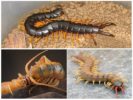
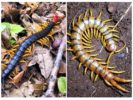
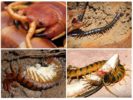
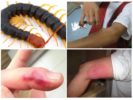
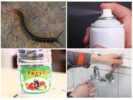
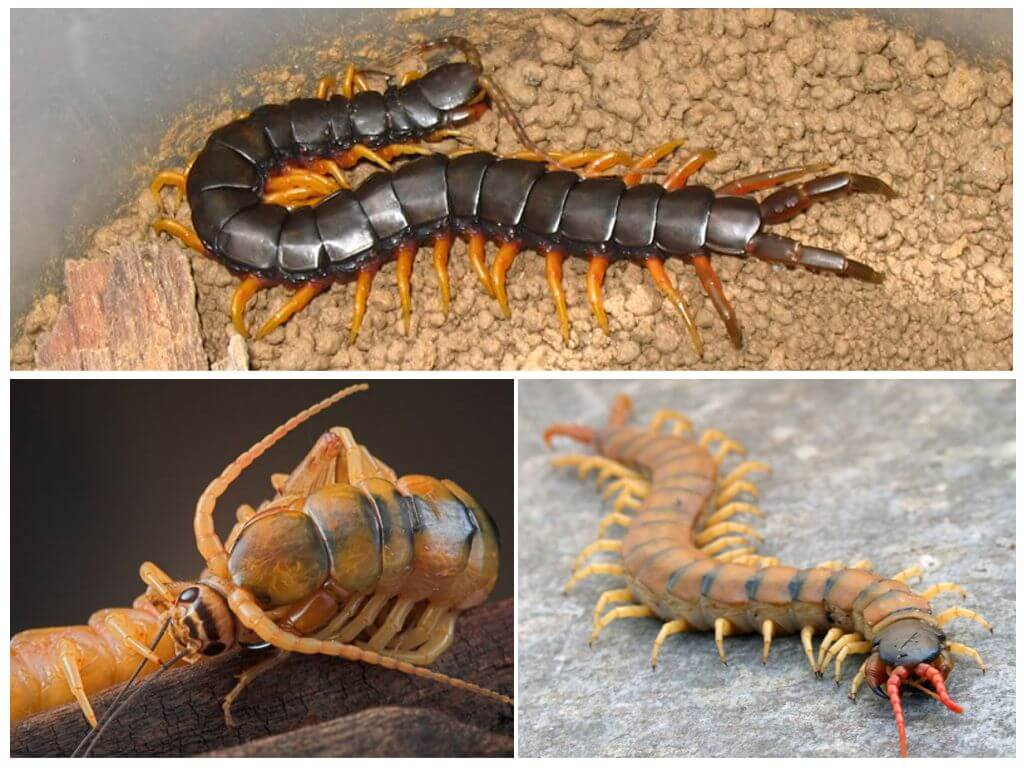
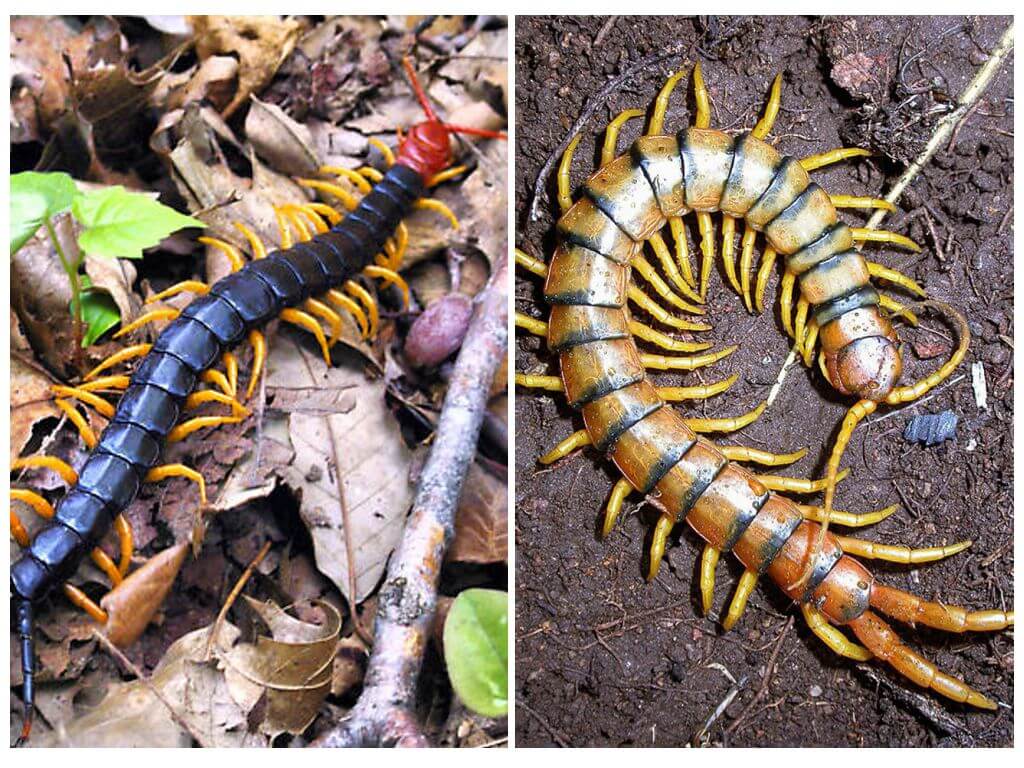
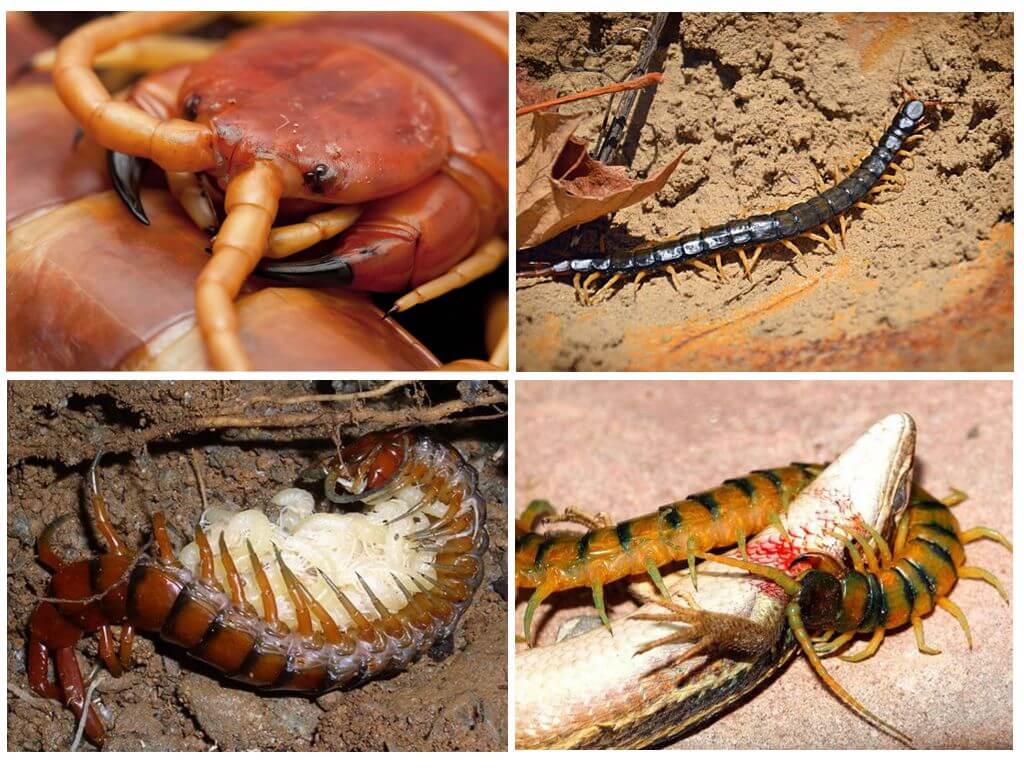
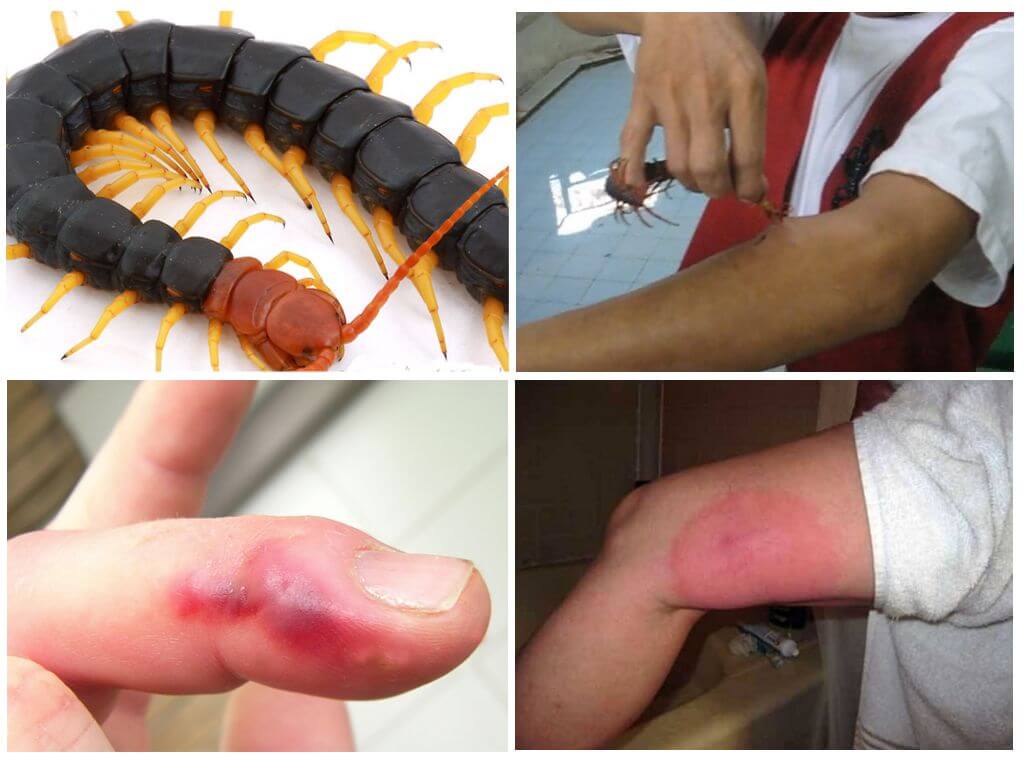
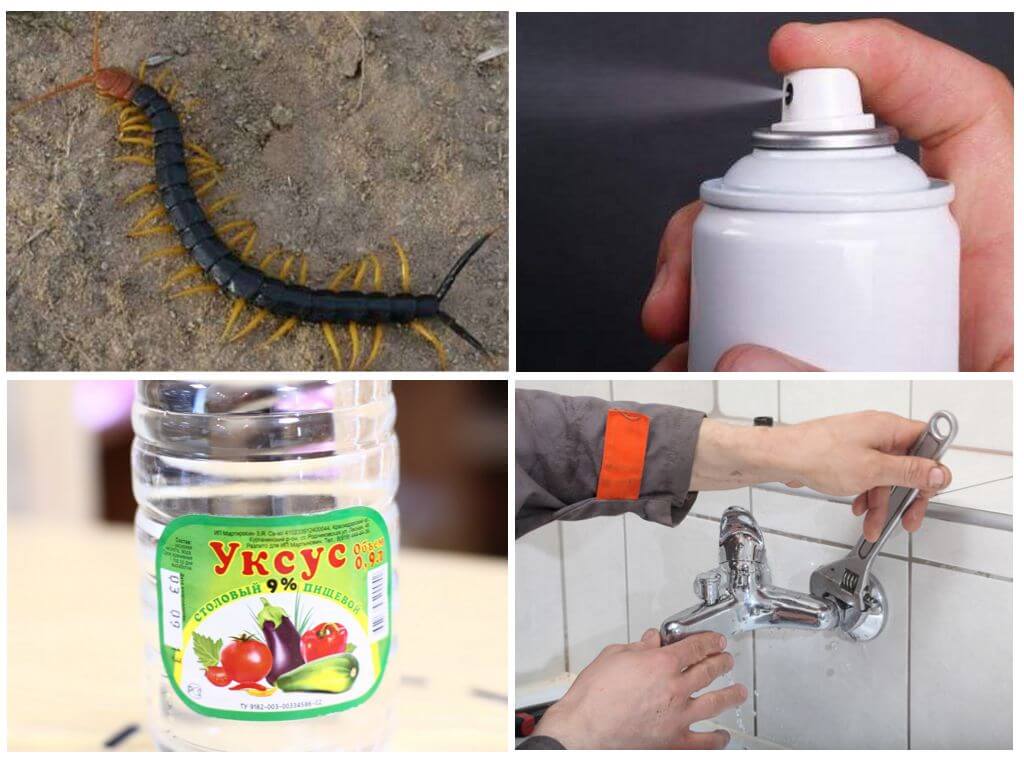




Scary creature. It can bite not only at night, but also during the day. Hiding under the rocks, in the sand, anywhere. You can simply not notice and get a painful bite.
If I had such a creature wound up in the house, a panic would begin. Horror. Not only unpleasant in appearance, but also aggressive.
For us, scolopendras are common. The bite is unpleasant, but, probably, immunity has already developed. But, guests of Crimea often get it. Immediately the temperature jumps, weakness, headache.
Relatives came to us. Scolopendra bit the child. I had to call an ambulance. The temperature jumped, could not bring down.
I like this. He even took it in his hands, did not sting. I would keep it as an exotic pet, like scorpions.